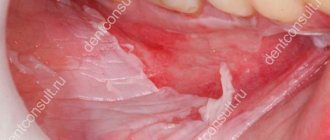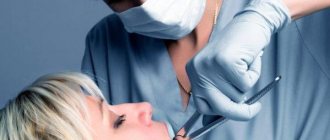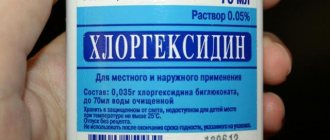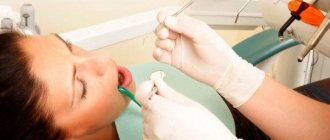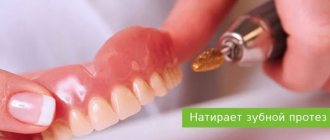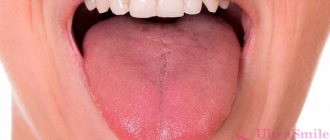Chlorhexidine is a solution antiseptic that should always be in your home medicine cabinet. Chlorhexidine helps well with burns. It destroys most of the known pathogenic bacteria that provoke purulent inflammation of burnt skin. It has been used in medical practice for more than 60 years to disinfect burn wounds and prevent bacterial complications. The antiseptic is used for both emergency and further treatment of burns. They disinfect the skin, mucous membranes of the mouth, nasal cavity and other areas.
Is it possible to treat a burn with Chlorhexidine?
When using Chlorhexidine for burns, you should pay attention to the concentration of the active ingredient in it - chlorhexidine bigluconate. For local and external use, 0.05%, 0.2% and 0.5% antiseptics are suitable. More concentrated products are intended for disinfection of medical instruments or undamaged skin.
This effective antiseptic destroys up to 80% of pathogenic fungi and bacteria. It is used in the form:
- applications;
- rinsing;
- irrigation;
- rinsing.
The drug prevents wound infection and purulent inflammation of wound surfaces.
What effect does Chlorhexidine have on a burn wound?
Chlorhexidine bigluconate interacts with protein components inside microbial cells. Penetrating intracellular membranes, it prevents bacteria from breathing. Because of this, the ATP content decreases, the osmotic balance is disrupted, which leads to cell death. The antiseptic destroys the DNA of pathogenic fungi and bacteria and prevents their reproduction.
Dermatologists advise using Chlorhexidine for burns to eliminate bacteria and fungi on the surface of the wound:
- gonococci;
- bacteroids;
- treponema pallidum;
- microbial spores;
- yeast-like fungi;
- chlamydia, etc.
The medicine retains bactericidal activity in the presence of purulent fluid and blood in the wound, prevents tissue infection, purulent complications - regional lymphadenitis, phlegmon, abscesses. Shows antimicrobial effect within 5-6 hours after application.
The burn should be treated with Chlorhexidine in the form of an aqueous solution. Buy a ready-made pharmaceutical 20% preparation and dilute it correctly with water.
Acid-fast fungi and bacteria, as well as the herpes virus, are insensitive to the medicine. The drug is used in anti-burn therapy to achieve the following effects:
- cleansing the burn from pathogenic flora;
- elimination of redness and swelling;
- reduction of local temperature;
- prevention of bacterial inflammation;
- acceleration of skin regeneration.
Unlike many other drugs, Chlorhexidine does not cause burning or irritation of the mucous membranes and skin. It does not affect the healing rate of burn wounds and has a minor list of contraindications.
Water-based chlorhexidine is used to treat burns. It is available in different dosage forms:
- The gel is a bactericidal medicine with an anti-inflammatory effect. Intended for external use for minor burns. Its components do not irritate mucous membranes and do not stain tooth enamel. Therefore, the gel is used to disinfect wounds inside the oral cavity.
- A 0.05% solution is a mild antiseptic that is used to treat burns in the groin area. It does not irritate the mucous membranes of the genitals and, if necessary, is injected into the urethral canal.
- 0.2% solution is a mild disinfectant. Used to irrigate the nasopharynx and rinse the mouth. Accelerates scarring of mucous membranes, prevents the proliferation of bacteria in the wound.
It is strictly not recommended to use a 0.5% alcohol-based antiseptic to disinfect burns. The concentrated preparation is suitable for disinfecting hands only if the skin is intact.
If you are hypersensitive to the components of Chlorhexidine, allergic reactions are possible - itching, burning, dryness, skin rashes.
Therapeutic instillations into the urethra
It happens that urethritis becomes chronic and often worsens. Urinary disorders and their pain begin to significantly reduce the patient’s quality of life. Antibiotics work, but the next relapse again forces the patient to change the medication or combine them. This leads to an increase in the cost of the treatment itself and makes its long-term results questionable. Since with such tactics there is a high probability of developing a microbial flora in your genitourinary tract that is resistant to almost everything. In such a situation, a doctor can come to help by proposing a simple but effective method. In daily practice, the urologist has to perform not only lavage of the anterior urethra. Instillations with medicinal solutions are included in the complex therapy of urethritis of various origins. The meaning of total urethral lavage becomes clear if you know something about the peculiarities of the settlement of microbes in hollow tubes. Which, in fact, is the urethra. Having an affinity for the epithelial cells of the inner lining of the canal, bacteria do not settle on it in groups or individuals, but build up a bacterial film. This collaboration allows bacterial cells to evade antibiotic therapy, which destroys only the substrate or outer film layer, allowing the main colony to survive and reproduce further. This phenomenon is associated with the recurrent course of many urogenital infections and the insensitivity of bacterial agents to antibiotics of many groups.
How to use correctly
To treat the skin and mucous membranes of burn injuries, only an aqueous solution of Chlorhexidine is used. It is used in two ways:
- Irrigation - washing burns to disinfect damaged areas of the body. After disinfection, the injured skin is treated with anti-burn ointments - Rescuer, Pantoderm, Dermazin, etc.
- Applications - applying a dressing soaked in the preparation to the burned areas. Compresses are used for suppuration and oozing. Application time should not exceed 2-3 minutes. The procedure is performed three times a day until healing.
Chlorhexidine is intended for the treatment of relatively shallow 1st and 2nd degree burns complicated by bacterial inflammation. To prevent deepening of the wound, it is used in diluted form. For the treatment of damaged mucous membranes and skin, 0.05%, 0.02% or 0.5% solutions are prescribed.
To prevent purulent inflammation, a weakly concentrated drug is used. If there is a high risk of wound infection, 0.05% Chlorhexidine is used. The concentrated antiseptic has a pronounced bactericidal effect, so it is used to destroy pathogenic flora during suppuration.
To prepare a disinfectant with the required concentration of the active substance, the pharmaceutical preparation is diluted. Distilled or boiled water is used as a solvent. The medicine is prepared immediately before treating burns and is not reused after 3-6 hours.
Features of the preparation of weakly concentrated solutions from 20% Chlorhexidine:
- 0.5% solution - intended to destroy infection during purulent complications. For 25 ml of the drug there are 975 ml of distilled water.
- 0.05% solution – destroys pathogenic flora during bacterial inflammation of burned skin. To prepare the drug, mix 2.5 ml of Chlorhexidine with 997 ml of water.
- 0.02% solution is a medicine with a bacteriostatic effect, which is used to prevent bacterial inflammation. There are 999 ml of water per 1 ml of concentrated solution.
The concentration of the solution is chosen based on the severity of the damage - the shallower the depth of the wound, the lower the content of chlorhexidine digluconate should be. For 1st degree injuries without compromising the integrity of the skin, the least concentrated product is used.
The prepared medicine is treated with burnt skin. To do this, cotton wool is generously moistened in the solution and carefully applied to the injured areas. The procedure is performed 2-3 times a day before applying anti-inflammatory or wound-healing ointments.
For suppuration, compresses with a concentrated solution are used. Cotton pads are moistened with antiseptic and applied to the wound for 2-3 minutes up to 3-4 times a day. To increase the effectiveness of treatment, the drug is prepared immediately before use.
Superficial burns on the skin are treated with gel. It is applied openly or under a bandage three times a day. Therapy is continued for 3-4 days. When blisters form on the body, it is recommended to combine the disinfectant with other drugs - Solcoseryl, Eplan, Argosulfan.
Urethral lavage for prevention
Sexually active men periodically face the need for emergency post-coital prevention of sexually transmitted diseases. Unprotected sex leaves about a couple of hours for urgent use of an antiseptic, which will help reduce the risks of developing and spreading the infection. The time allotted for washing the urethra with miramistin is limited. The causative agents of syphilis, gonorrhea, ureaplasmosis, mycoplasmosis, by the end of the second hour from entering the urethra, penetrate into the cells of its endothelium and penetrate further into the blood. For prophylactic instillation in pharmacies, Miramistin is sold in bottles with a urological attachment. Special preparation for prophylaxis is not required. The drug in a volume of 2-3 milliliters is injected into the urethra, in which it is held for 2-3 minutes. Both drugs are chlorine-containing antiseptics with a powerful oxidative effect. Their use is limited by possible allergic reactions. With frequent use, chemical burns to the mucous membrane of the urethra are possible. Professional emergency prevention of sexually transmitted infections is also possible. It is performed by a urologist using a urological catheter and silver solutions. They are active against the vast majority of types of pathogens of sexually transmitted diseases. The main condition for the effectiveness of such professional prevention is earlier seeking specialized help. That is, within two hours from the moment of unprotected sexual intercourse.
Adverse reactions
A concentrated antiseptic solution provokes allergic reactions. Incorrect dosage calculation and abuse of a disinfectant leads to the following consequences:
- redness;
- dryness;
- skin stickiness;
- salivation;
- taste disturbances;
- skin rashes;
- contact dermatitis.
In 96% of cases, adverse reactions disappear after discontinuation of the drug.
Do not use a 20% antiseptic to disinfect open wounds. This is fraught with a chemical burn and worsening the condition of the burned skin.
Accidental ingestion of the medicine leads to poisoning and diarrhea.
In what cases is the use of antiseptics prohibited?
Chlorhexidine is not used in case of hypersensitivity to the active or auxiliary components. Contraindications to its use are:
- exacerbation of dermatitis;
- tendency to allergies;
- parallel intake of iodine preparations;
- 3rd and 4th degree burns;
- relapses of herpes zoster.
Use the medicine with caution to treat burns in patients under 16 years of age. Children's skin is prone to allergic reactions, so treating wound surfaces with 0.5% antiseptic is fraught with nettle fever.
Can Chlorhexidine burn your skin?
Chlorhexidine burns occur when wounds are disinfected with concentrated solutions. Even healthy skin cannot be treated with a 20% antiseptic, as it provokes chemical injuries. The burning effect of the drug is enhanced by alcohol-based medications. Therefore, in anti-burn therapy, only an aqueous solution is used. If a burn occurs with this drug, the skin should be rinsed under running cold water for 15-20 minutes.
Chlorhexidine is an effective disinfectant that does not interfere with the restoration of the skin or mucous membranes. It is considered a first-line drug in the treatment of burn injuries. Thanks to its bactericidal properties, it is effective against bacterial and purulent complications.
Preparations for lavage of the urethra
Microorganisms such as chlamydia exhibit the properties of a virus and bacteria at the same time, being an intracellular parasite. Therefore, after chlamydia has been introduced into the endothelium of the urogenital tract, it is not so easy to get them out of there. And they are not susceptible to antibiotics of many classes. This is where rinsing the urethra with collargol comes to the aid of the urologist. A 2% solution containing silver and protective protein is administered by the doctor during the appointment. For this purpose, a 40-cm Nelaton catheter is used. It is sterile and disposable, made of plastic that does not cause allergies and irritation of the mucous membrane. A 150 mm disposable syringe is also used, into which the solution is drawn and which creates the necessary pressure for its administration. Other drug options for the procedure may be: protargol, combinations of dioxidine and protargol, dimexide and dioxidine. The drugs have a local antiseptic effect plus have an exfoliating effect. Helping to get rid of cells affected by intracellular pathogens or bacterial film. Washing with protargol or collargol is effective for trichomoniasis, gonorrhea, mycoplasmosis. Washing the urethra with Uro-Hyal is more often used for combined pathologies of the urinary tract. Persistent interstitial cystitis in combination with urethral lesions may require such a drug. With this development of events, both the urethra and the bladder are washed.
- Collargol - a 2% solution of silver on glycerin - is used for a wide range of infections. It inhibits the growth of bacterial agents, viruses, and protozoa. Highly efficient;
- Silver proteinate or colloidal silver is known as protargol. The aqueous solution is characterized by antiseptic, astringent and anti-inflammatory properties. The effect is based on the binding of silver ions to the genetic material of pathogens. Rinsing the urethra with protargol allows you to create a protective film instead of exfoliated endothelium (due to the precipitation of proteins by silver). These two drugs are the main antiseptics, which are extremely safe and widely active;
- dimexide or dimethyl sulfoxide exhibits anti-inflammatory and analgesic effects. Penetrates biological membranes and improves the penetration of other substances into endothelial cells. Therefore, they use it in combination with silver preparations (collargol and protargol). It is used more rarely on its own;
- dioxidine - hydroxymethyl quinoxaline. Its solutions exhibit broad bactericidal activity. One of the advantages is the absence of irritation of mucous membranes and skin. More often a one percent solution is used. Suitable for joint use with dimexide.
The answer to this question is quite expected. This is only part of a set of measures to get rid of inflammation of the urethra due to sexually transmitted infections. There is no point in using it every day. 2-3 procedures per week are enough. This will make the instillations as beneficial as possible and will avoid side effects and complications. This frequency of procedures allows the urethra to fully recover.
- inexpensive;
- does not require the use of reusable instruments;
- allows you to overcome antibiotic resistance of bacterial films;
- allows you to shorten the time and cost of treatment;
- makes it possible to treat chronic, persistently recurrent inflammatory changes;
- combines the advantages of preventive and therapeutic methods;
- allows you to avoid multiple courses of antibiotics and prevents the development of bacteria with multiple resistance to antimicrobial drugs.
